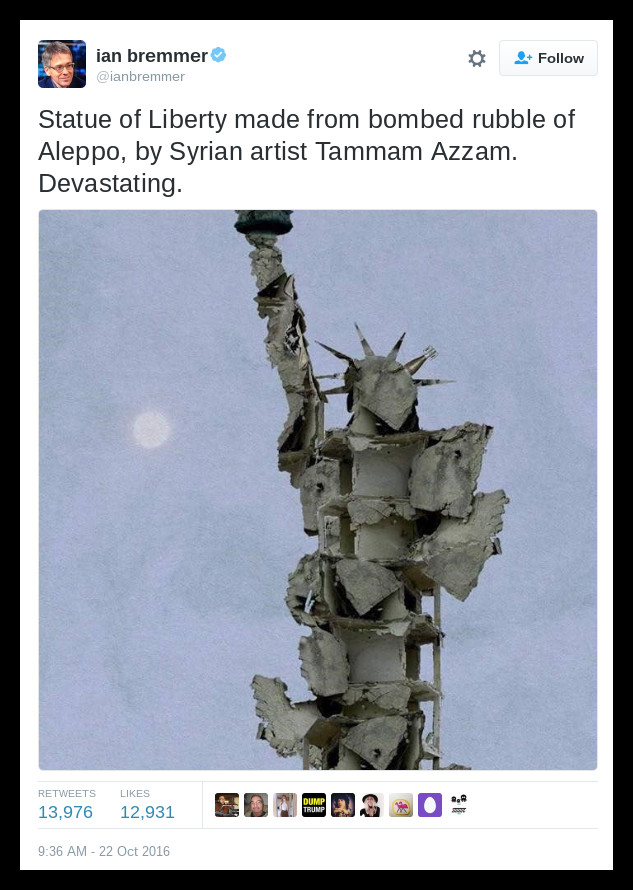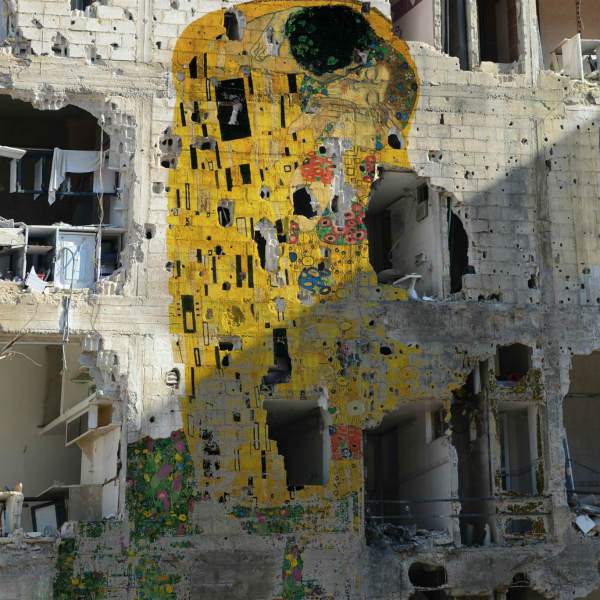A photograph purportedly showing a recreation of the Statue of Liberty made from the rubble of the wartorn Syrian city of Aleppo was widely circulated in October 2016, with one of the most popular versions of it being shared by author Ian Bremmer:
As stirring as it may be, though, this image does not depict a real physical statue, it did not originate in 2016, and it does not picture anything made with rubble from Aleppo.
This image is a piece of digital artwork created by Syrian artist Tammam Azzam in 2012. According Al Arabiya, in 2012 Azzam re-arranged pieces of a photograph showing a destroyed Syrian building into the shape of the Statue of Liberty. Azzam did not comment on how his artwork was being interpreted in 2016, but did say that his use of the Statue of Liberty was intended to represent freedom and not be a commentary on U.S. politics:
He said the work was done by a photomontage on the computer and not a real statue. The Syrian artist explained: “The Statue of Liberty in New York does not represent US politics and I used it only as the symbol of freedom.”
“The piece at the time was carrying a message of optimism despite all of the destruction in Syria,” he added “but that was a long time ago.”
Azzam has frequently incorporated well-known symbols and artworks into his own work as a way of bringing attention to the conflict in Syria:
Syrian artist Tammam Azzam has found his own way of speaking out against the Syrian crisis. Using famous paintings from the Western world projected against bombed buildings, Azzam aims to “draw attention to the tragedy of Syria”.
His most popular work, “Freedom Graffiti”, shows Gustav Klimt’s well-known painting “The Kiss” superimposed onto a bombed Syrian building.
“I chose it as an icon of love, a way of looking for the stories of love behind this wall that was completely obliterated by the machinery of war,” he said.



